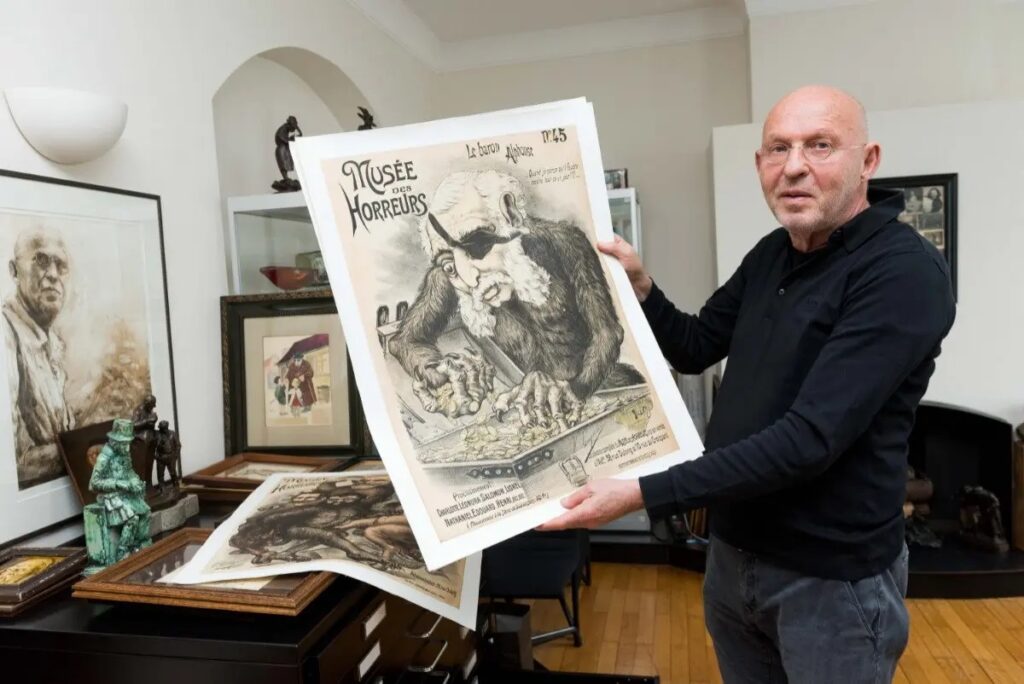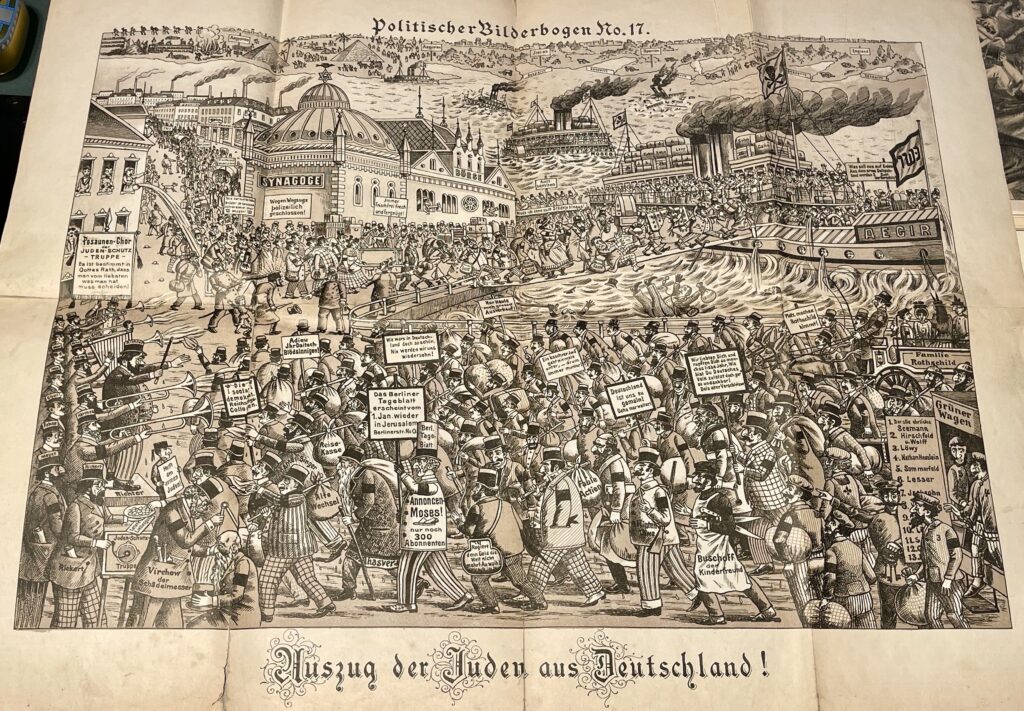At his home in Brussels, Arthur Langerman displays objects that would make most people cringe: figurines with exaggerated features, posters with antisemitic phrases and images, and beyond-creepy portraitures. But these items are far from the worst.
His collection of about 9,000 antisemitica also contains paintings depicting the murder of Jews, children’s books explaining how to recognise Jews by their supposed physical characteristics and posters from antisemitic organisations in various countries, including Belgium – a handful of which even deny the Holocaust.
Langerman says that my reaction of shock and disgust is what his friends and family also felt when he first began amassing the grotesque collection, a hobby that has lasted for more than 60 years.
“All my life, people and family said: ‘You are totally crazy. How can you make a collection of these awful things?’” Langerman recalls. “So I continued without telling anyone what I was doing. I was filling my house with pieces everywhere. For me, it was comforting. It was a way of healing.”
Langerman says that collecting antisemitica helped him cope with the horrors of the Holocaust in which he lost about 20 family members, including his father. In 1944, his parents were captured in Antwerp and transferred to concentration camps. At just two years old, Langerman was sent to a children's home of the Association des Juifs en Belgique in Etterbeek, Brussels – a fact he only recently discovered. His father died in 1945 in Germany, but his mother survived and reunited with Langerman when he was three. However, she was never the same and could not talk about what happened.

Arthur Langeman at his home in Brussels
In turn, Langerman never told her about his collection, which he started at the age of 19. Now 81, he uses it to remind people about the Holocaust – and combat antisemitism. “Eighty years have passed since the war,” Langerman says. “Some young people don't even know there was a war or that there were concentration camps. With my collection, you see what it was.”
One of several travelling exhibitions from Langerman’s collection is now on display at the Mundaneum in Mons until December 8, 2024. Called #Fake Images: Unmask the Dangers of Stereotypes, it explores the effects that propaganda and imagery have on people. Initially only intended for display at the Kazerne Dossin Holocaust Memorial and Museum in Mechelen in 2021, the exhibition was so impactful that it went to the headquarters of the European Commission in Brussels in 2022 and then the United Nations in New York in 2023. “It shows that the information we receive is often not what it seems,” Langerman says. “That's exactly what's happening today.”
He sourced antisemitica from the 17th to the 21st centuries from flea markets, trade fairs and auctions in Europe, the United States and the Middle East, as well as online. The collection includes around 3,500 postcards; over 1,000 sketches; hundreds of posters, leaflets and pamphlets; and numerous illustrated books, newspapers, magazines, paintings, engravings, drawings, sculptures and objects.

Antisemitic posters in Langeman's collection
“I always say images are much stronger than anything written,” Langerman says. “The question that I was asking myself always is what did the Jewish people do to be punished in such a way that six million people died, including 1.5 million children? It's already been 3,000 years that Jews have been hated in the world.”
In 2017, alarmed by rising antisemitism and a growing lack of awareness about the Holocaust, Langerman went public with his private collection, creating the Arthur Langerman Archive for the Study of Visual Antisemitism (ALAVA) Foundation. “I didn't want to make money with objects from the Holocaust,” he adds, so he found a host for the foundation, the Centre for Research on Antisemitism at the Technical University of Berlin, which preserves and maintains the collection.
Langerman notes that those who see the exhibitions of his collections are typically surprised and disgusted because they either didn't know about the propaganda or didn’t know how bad it was. But they serve their purpose, he says, of teaching the lessons of the past.

